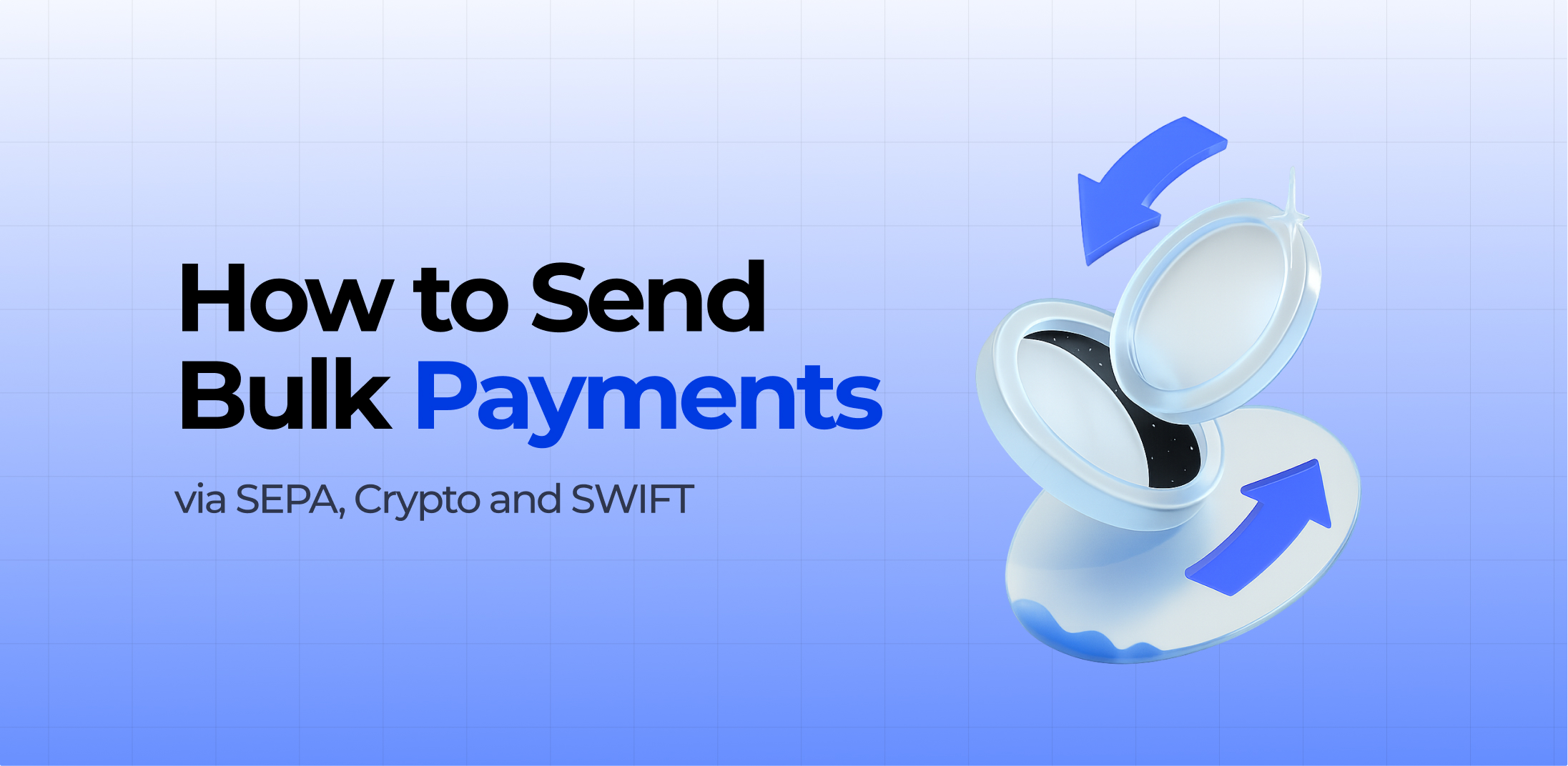Each year, countless businesses confront the difficult challenge of being debanked – when their bank accounts are unexpectedly shut down or their applications rejected without clear reasons. Studies show that nearly one in five small and medium-sized enterprises (SMEs) have experienced a business account rejected – Account Opening Solutions, leaving them without vital banking access. This rising wave of traditional bank refusals is creating serious obstacles, particularly for businesses in high-risk industries or those with complex international operations.
For these companies, losing banking access is more than an inconvenience – it can jeopardize their very existence. Fortunately, there is an alternative: Electronic Money Institutions (EMIs). Unlike conventional banks, EMIs are often structured to serve international and digital-first businesses, with compliance frameworks that can accommodate more complex profiles than traditional banks.
This article acts as your step-by-step EMI recovery plan, exploring why banks reject accounts, what to do immediately after being debanked, and how to navigate the EMI account opening process effectively. Whether you need reliable account opening solutions or a forward-thinking financial partner to support your growth, this guide will empower you to regain stability and confidently move ahead.
Why Are Businesses Getting Rejected by Banks?
More and more businesses are encountering the frustrating experience of having their application business account rejected. Financial institutions are adopting a more cautious approach, strengthening their compliance checks and anti-money laundering (AML) policies. Sectors such as cryptocurrency, online retail, and cross-border services often raise concerns due to their higher perceived risk.
Common causes for refusal include missing paperwork, vague business operations, or previous regulatory issues. Banks may also decline accounts associated with high-risk merchant codes or suspicious transaction behaviors. Recognizing these challenges is crucial to overcome rejection and consider flexible options like Electronic Money Institutions (EMIs).
Rising Risk Sensitivity and Compliance Burdens
Due to stronger AML (Anti-Money Laundering) and CFT (Counter Financing of Terrorism) requirements, banks have tightened their onboarding processes significantly. Industries such as cryptocurrency and other high-risk sectors face intensified scrutiny, resulting in more frequent account refusals. Turning to bank rejection solutions like Electronic Money Institutions (EMIs) offers businesses a practical way to overcome these hurdles.
Common Reasons for Rejection
Applications are frequently declined by banks because of high-risk MCC codes associated with specific sectors, insufficient or missing documentation, complicated cross-border operations, and records of chargebacks or regulatory concerns. Recognizing these factors is essential for finding successful bank rejection solutions and reliable alternative financial services.
Impact of Bank Rejection on Business
Bank rejection often causes significant operational delays and damages a company’s credibility with clients and partners. This pressure creates an urgent need for effective bank rejection solutions, making EMI account opening a vital step for businesses to regain financial stability and continue smooth operations.
Debanked? First Steps to Take

If your business has been debanked business, prompt action is essential. Begin by evaluating the situation – verify if any funds are frozen or if payment operations have been interrupted. Ask your bank for a clear explanation regarding the account closure.
Collect all necessary documentation, including company registration and compliance records. Rather than immediately applying to another bank, take time to prepare thoroughly and consider more flexible financial providers like EMIs to ensure a smoother transition and recovery.
Assess the Damage
The initial action after being debanked is to carefully evaluate how your business is affected. Verify whether any funds are held, scheduled direct debits have stopped, or merchant accounts have been shut down. Identifying these issues early allows you to strategize your response and minimize any operational setbacks.
Request Formal Reason for Rejection
Always ask your bank for a formal explanation of why your account was rejected or closed. This information is crucial for understanding compliance issues and preparing a stronger, more transparent application when seeking EMI account opening or other bank rejection solutions in the future.
Collect Business Bank Account Key Documents
Gather all necessary documents prior to submitting an application to a new financial institution. This usually involves your company’s incorporation certificate, identification documents of shareholders, proof of address, relevant business agreements, and if relevant, your KYC and AML compliance policies. Being well-prepared with these materials helps streamline the onboarding process and increases the likelihood of account approval.
Don’t Rush to the Next Bank Account
Don’t rush to apply at another traditional bank right after being rejected. Since banks commonly exchange information about declined accounts, this can reduce your chances of approval elsewhere. Instead, concentrate on rebuilding your business credibility by strengthening compliance measures and consider alternatives such as EMIs, which provide more adaptable onboarding processes and greater acceptance of higher-risk profiles.
How EMIs Offer a Lifeline for Rejected Businesses

Being rejected by a traditional bank can feel like a major setback—but it’s not the end of the road. For many businesses, especially those considered high-risk, Electronic Money Institutions (EMIs) provide a modern and reliable alternative. EMIs deliver core financial tools like business accounts, payment solutions, and multi-currency capabilities, all through agile, technology-driven platforms.
These institutions are especially well-suited for digital startups, crypto-focused firms, and international businesses that often fall outside conventional banking criteria. For a debanked business, partnering with an EMI can offer a swift and stable route back to operational continuity and financial control.
What Is an EMI?
An Electronic Money Institution (EMI) is a regulated financial provider that offers services such as business accounts, payment processing, and foreign exchange, EMIs safeguard client funds but do not provide lending services like banks.
EMIs operate through fintech platforms, enabling quicker onboarding, user-friendly digital tools, and adaptable services. These features make EMIs especially suitable for businesses that face challenges with conventional banking access.
Why EMIs Are More Flexible
EMIs stand out for their flexible, technology-driven onboarding, streamlining the KYC process for faster and more efficient verification. Their ability to assess and accommodate higher-risk profiles makes them a strong fit for industries like cryptocurrency, forex, and digital services. With shorter approval times and fewer bureaucratic barriers, EMIs offer a reliable alternative for businesses rejected by traditional banks.
Types of EMI Services Available
Electronic Money Institutions (EMIs) offer diverse financial solutions designed to meet the needs of today’s global businesses. Their services often include individual EUR and GBP IBANs for streamlined local and cross-border payments, multi-currency accounts to support international trade, merchant processing tools for smooth customer transactions, and specialized FX and treasury features to reduce currency risk and enhance cash flow management.
EMI Account Opening Checklist
Opening an account with an Electronic Money Institution (EMI) tends to be quicker than with traditional banks, but thorough preparation remains crucial. To improve your approval odds, ensure your application is complete and meets compliance standards. Before applying, gather the following:
- Legal Documentation. Prepare your incorporation certificate, shareholder list, and identification for company directors to prove your business’s legal identity and ownership.
- Clear Business Description. EMIs need a straightforward explanation of your business activities, client base, and revenue sources.
- Website and Business Plan. For online or crypto ventures, a professional website and comprehensive business plan showcasing your services, target audience, and growth objectives are vital.
- AML Policy (if relevant). If your business handles third-party funds or operates in regulated sectors, having a clear Anti-Money Laundering policy is necessary.
- Expected Transaction Volume. Be transparent and realistic about your anticipated monthly transaction amounts and their geographical distribution.
Pro Tip: Create a “clean file” by organizing all paperwork, ensuring consistency, and being transparent. This approach can speed up onboarding and demonstrate that your debanked business is a trustworthy, low-risk client.
Choosing the Right EMI Partner

Not every Electronic Money Institution (EMI) offers the same level of service or support – choosing the right one can greatly influence how effectively your business bounces back and grows. With many EMI providers on the market, it’s important to assess their features, licensing status, and how well they match your operational requirements.
Criteria to Consider
When choosing an EMI, begin by examining the regulatory body behind it. Reliable providers are typically licensed by national regulators within the EU or other recognized jurisdictions. It’s also important to confirm the range of supported currencies and payment corridors – especially for businesses with global operations.
Evaluate whether the EMI integrates smoothly with your existing payment systems and offers access to cost-effective FX solutions. Lastly, assess the onboarding timeline and pricing transparency, as some EMIs deliver rapid setup with clear fees, while others may involve delays or undisclosed charges.
Red Flags to Avoid
When choosing an EMI, it’s important to be aware of certain red flags that could signal future problems. Stay away from providers that are not properly licensed, as they operate without regulatory supervision and may jeopardize your funds.
Watch for unclear or poorly disclosed fee structures – unexpected charges can quickly add up. Additionally, avoid EMIs that provide minimal compliance assistance; insufficient support with KYC, AML, or onboarding requirements can slow down your setup and raise the risk of another business account rejection.
Scaling with an EMI: Beyond Recovery
Electronic Money Institutions (EMIs) offer more than just a solution for businesses bouncing back from bank rejections – they open the door to broader growth potential. By collaborating with an EMI, companies benefit from reduced fees, quicker international transactions, and sophisticated automation tools.
Utilizing EMIs’ cutting-edge APIs and adaptable account options, businesses can optimize workflows, cut expenses, and confidently expand across borders. This section highlights how EMIs not only aid recovery but also empower sustainable growth and enhanced financial flexibility.
Benefits of Staying with an EMI Long-Term
Continuing your partnership with an EMI after overcoming initial challenges brings numerous benefits. EMIs often charge lower fees for international transactions, reducing costs for businesses operating globally. They also offer favorable foreign exchange rates, allowing companies to save on currency conversion expenses.
Thanks to advanced APIs, EMIs facilitate smooth automation of payments, reconciliation, and reporting, enhancing overall efficiency. Moreover, they provide robust compliance tools that improve oversight and transparency for KYC and AML requirements.
When to Reapply for a Traditional Bank
Once you’ve partnered with an EMI and achieved financial stability, it’s wise to consider reapplying to a traditional bank after maintaining a strong track record for 6 to 12 months. Use this time to ensure your transaction history is clean, with no suspicious activities or chargebacks.
Showing enhanced compliance with Anti-Money Laundering (AML) regulations and clearly explaining your transaction volumes will strengthen your credibility. Banks tend to favor businesses that demonstrate transparency, consistency, and solid compliance practices.
Conclusion
Experiencing a business account rejected scenario can be daunting, but it doesn’t have to limit your company’s potential. By identifying the reasons behind traditional bank refusals and partnering strategically with an Electronic Money Institution, your business can not only recover but flourish.
EMIs are more than mere alternatives – they offer adaptable, forward-looking financial solutions that foster growth, global reach, and operational flexibility. Adopting the EMI recovery plan means more than restoring banking access; it opens doors to new possibilities for expansion and success. Being debanked doesn’t have to be the end — explore EMI solutions to regain stability and continue growing








